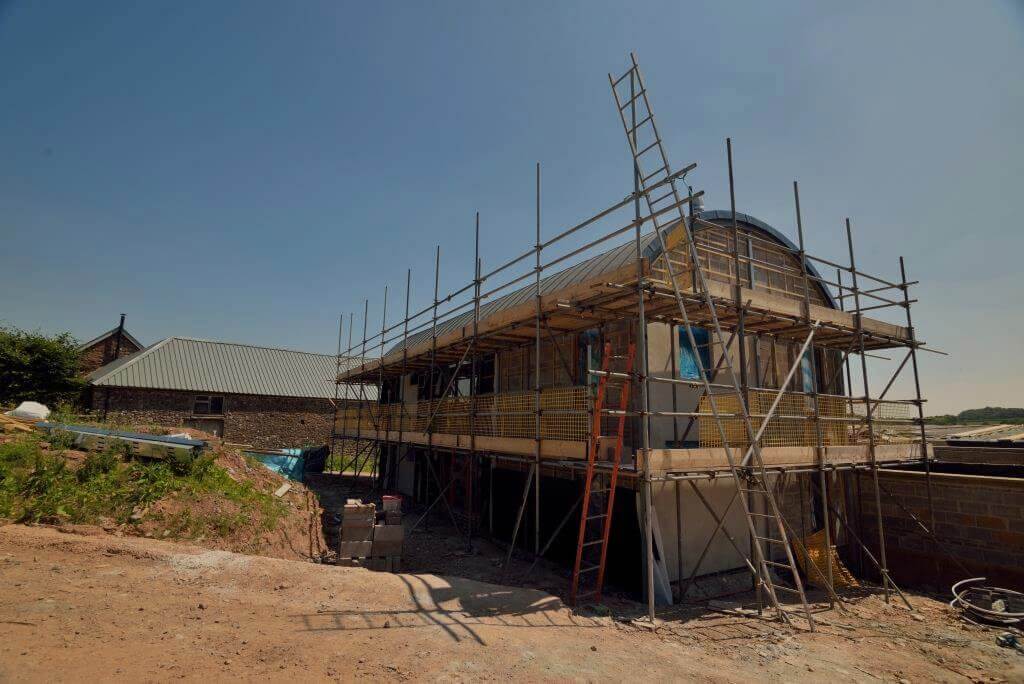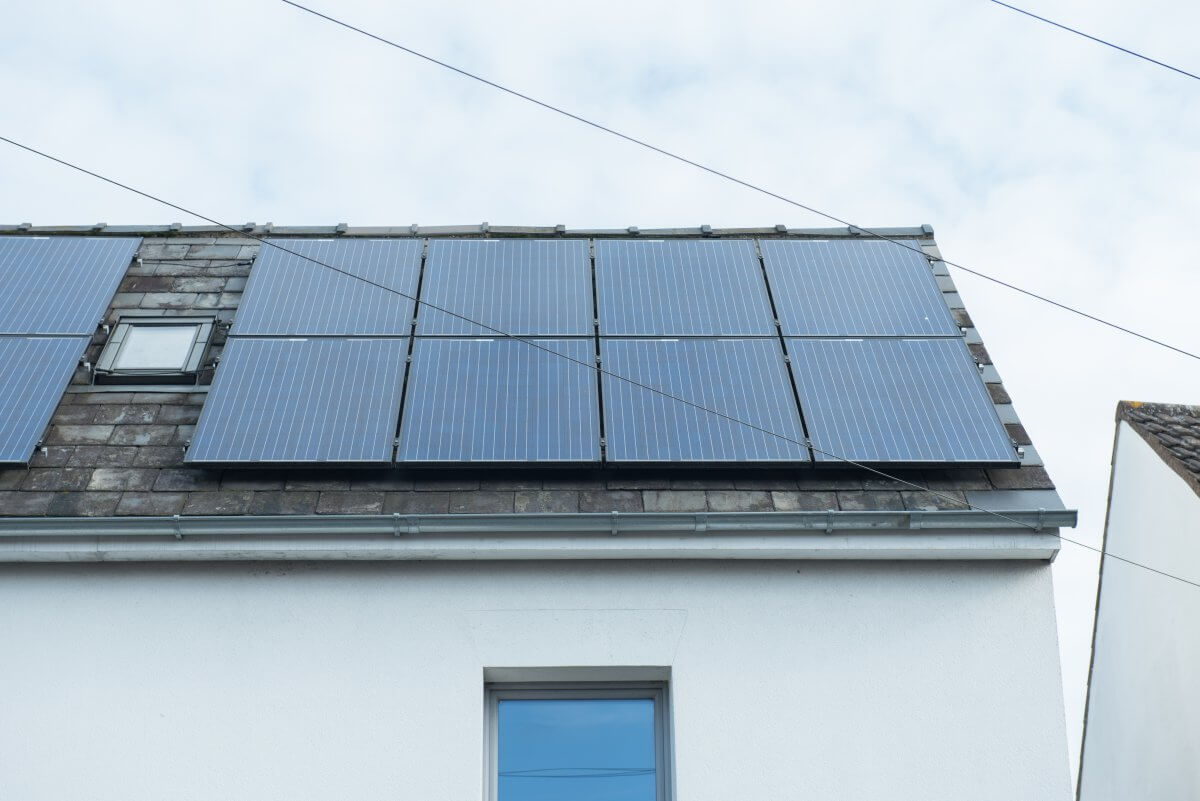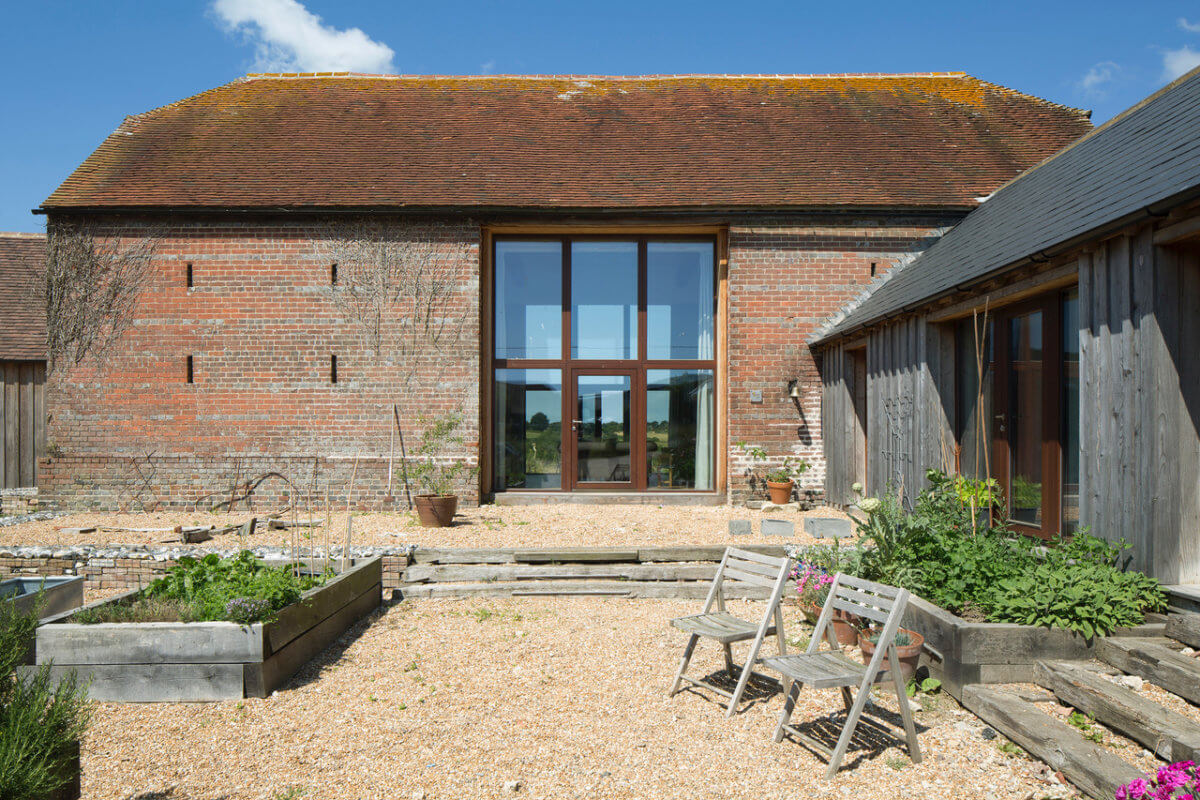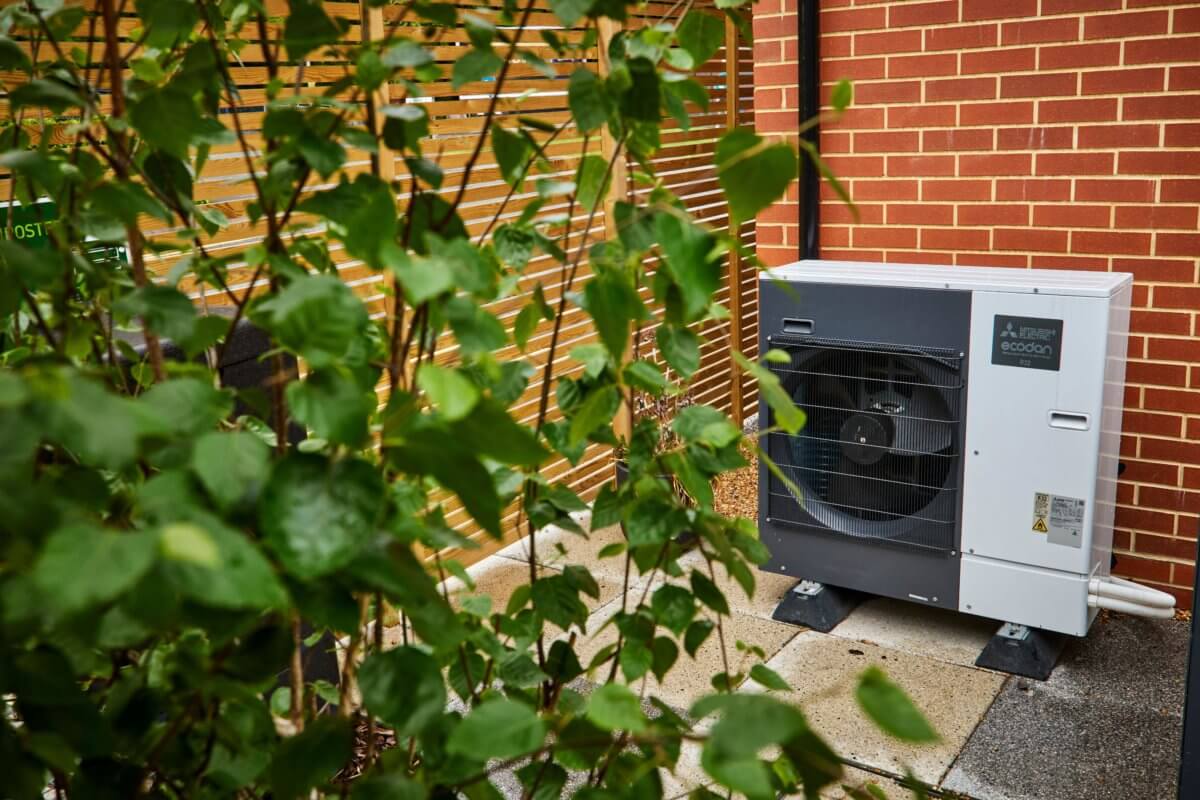An Introduction to Eco Renovation

Are you thinking about an environmentally friendly home renovation? Perhaps you are considering retrofitting a Victorian terrace to improve its energy efficiency?
Starting a renovation project can seem a little daunting at first. This is the first part of a series that will help you with these projects, complementing our free Ecology Guide To Eco Renovation. In future posts we’ll talk about air and ground sourced heat pumps; using renewable energy sources such as solar energy; and improving your home’s glazing and wall insulation. We will also discuss planning and financing your project to make the necessary changes.
What’s the Difference between Renovation and Conversion?
Renovation and conversion are two different things when it comes to building work. Renovation means altering or refurbishing your house or flat but there is no change of use when the work is done. Conversion, on the other hand, means changing the way the building is used. For example, turning a barn into a house or a mill into apartments.
This article will concentrate on renovation (we’ll discuss conversion and self-build at a later date). Whether it’s renovation or conversion, any work done that makes the building more energy efficient and reduces its impact on the environment we call retrofit. Retrofitting helps improve the building while also being good for the planet!
Why Retrofit?
The growing impact of climate change and the rising cost of gas and electricty prices means there’s never been a more urgent time to improve the energy efficiency of your home. Many new houses are not built with sufficient insulation, wasting energy and money. Heat pumps and solar panels are rarely fitted as standard. Home energy use accounts for 16% of the UK’s total carbon emissions, yet over a third of heat loss in the home occurs through walls due to poorly fitted windows and little or no wall insulation. Retrofitting your home can improve its energy efficiency and reduce the environmental impact by using more efficient forms of heating and better insulation and also making use of recycled, repurposed and non-toxic materials.
Benefits of Retrofitting your Home
-
-
- Comfort of a well-insulated, energy-efficient home
- Adds value to your home
- Reduces running costs
- A renovation that increases energy-efficiency and lowers the home’s EPC value can lower mortgage interest rates with Ecology Building Society
- Reduces carbon emissions and minimises environmental impact
-
Planning an Eco-Friendly House Renovation
Fabric First
So where exactly you do you start on your dream home renovation project?
Before you even start planning your renovation work, it is essential that you get to know your building to ensure that the design or the changes you have in mind are appropriate for the actual fabric of the place.
This fabric first approach means you start improving the integrity of the building by selecting and integrating the right materials that enhance its energy efficiency. This would include: the walls (e.g. external or internal insulation), roof, floors, doors, and windows (e.g. secondary, double or triple glazing). Getting a home energy audit will help you understand what is required.
Whole House Retrofit – Reducing Your Energy Bills
The goal of a ‘fabric first’ approach is to create a well-insulated, airtight and properly ventilated building that minimizes energy consumption and provides comfortable indoor living while minimising the environmental impact. Combine this approach with the right mix of renewable energy and heating sources, such as solar panels, home battery and heat pump (what we call whole house retrofit) could also significantly reduce your annual running costs. Indeed, some energy companies are already offering zero bills for five years for customers who fulfil the right criteria.
Setting your Renovation Goals
Spending time thinking ahead about what you want to achieve, setting specific goals, developing budgets, and a schedule of work and getting the right mortgage for your new eco home project will, in the end, save you time, effort, money and a lot of stress!
Firstly, think about what you want to achieve. It may be the green renovation of a derelict property or increasing the energy efficiency of your current old home. Set specific goals.
These might include:
-
-
- Improving your home’s energy performance certificate (EPC) rating
- Reducing household bills by installing solar panels and/or a heat pump
- Wanting to increase the value of my home
- Minimising the impact on the environment through choice of building materials
- Cutting down on the use of plastics and other toxic materials
-
Defining your goals will help you to plan your budget and develop a schedule of work and we suggest you follow this simple plan when getting started on your eco renovation or conversion project:
-
-
- Think about what you want to achieve
- Set specific goals and targets
- Plan your budget and schedule of work
- Understand your building and get a builder with experience of energy efficient building techniques on board
- Get the right finance in place
- Take a fabric first approach:
- Get a home energy audit
- Appropriate insulation of walls, floors and roof etc
- Install doors and glazing to improve airtightness and ventilation
-
Finding the Right Builder
The success of any eco renovation project will depend on two things:
- understanding your building (‘fabric first’);
- and getting a trusted builder with experience and knowledge of environmentally sensitive and energy efficient building techniques on board.
Alternatively, a Retrofit Coordinator is qualified to identify, assess, and manage the technical processes associated with retrofit projects.
The building trade is notoriously conservative and finding a builder with the right eco credentials can be difficult. Word of mouth is certainly a strong recommendation but there are a number of organisations that can help point you in the right direction, including:
-
-
- Association of Environment Conscious Building (https://www.aecb.net)
- Trustmark – Government endorsed quality scheme (https://www.trustmark.org.uk)
-
Renovation Mortgage Financing
Getting the right finance for a renovation project can be a big challenge. Many High Street mortgage lenders will not fund buildings that are uninhabitable or derelict, or properties made from non-standard construction materials (e.g. timber-framed structures or thatched roofs).
Ecology is one of the few lenders that offers finance to people who want to renovate or convert homes that need significant work or are deemed ‘unmortgageable’. We are experts and if the changes you make improves energy efficiency, we will not only lend you money but also guide and support you during the whole project.
How does an Eco-Friendly Mortgage Work?
We assess every eco-friendly and energy efficient building project on an individual basis. There are no hardened rules about the properties we lend on or the state of repair they are in. It could be a poorly-insulated Victorian home, a derelict farmhouse, a fire-damaged terrace house or a listed building. Our primary stipulation is that you improve the building’s EPC rating by at least two bands and that we receive a full details of any building works you intend to carry out.
If your renovated property is more energy efficient we can lower your interest rate through our C-Change mortgage discounts as your EPC rating improves. We can also help with additional borrowing if your initial plans change, for instance, if you want to add an extension.
A big house renovation project can be both exciting and terrifying. But with careful planning and expert financial support, you can turn that tired or derelict property into a comfortable and energy-efficient home that’s a sure fit for modern living.
Find out more about our renovation mortgages or our C-Change discounts.



